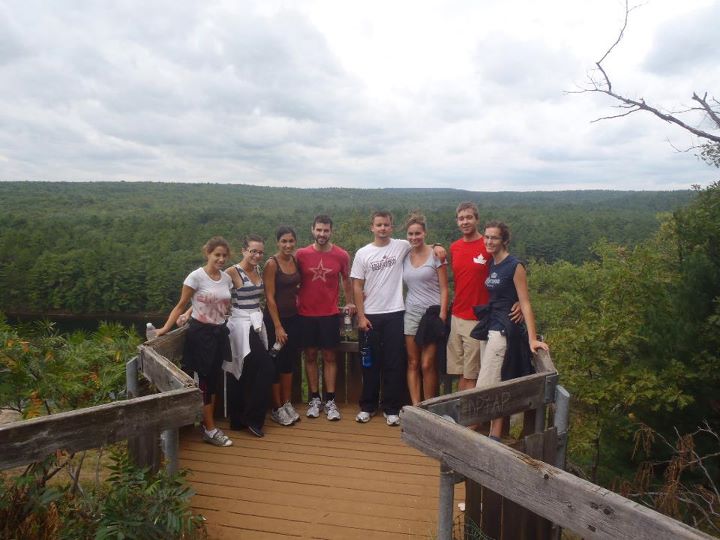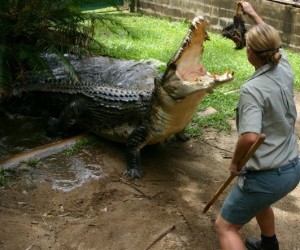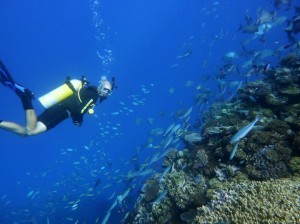Mammoth Caves
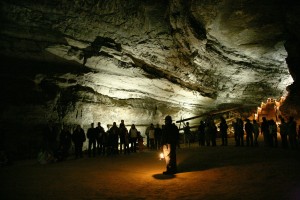 Last month I wrote about the highest caves in the world, but who know there was the longest cave too.
Last month I wrote about the highest caves in the world, but who know there was the longest cave too.
A friend of mine mentioned to me that while she was traveling in the states a few years ago, she came across this national park in central Kentucky where the longest cave system existed. The name of the system is called Mammoth-Flint Ridge Cave System. This park was called a national park in the early 1940, and now is a World Heritage Site too.
The cave goes for over 390 miles and every year more discoveries and connections are found. Including evidence that indigenous people ventured into these caves as far back as 2,000 years ago. Over 6,000 Native American remains were found. Yet, it really wasn’t until the late 1700’s where the Mammoth-Flint Ridge was found my white settlers. From the 1700s until the late 1930’s the cave was the main source of supplying limestone. It wasn’t until the American government created a few laws in the 1930’s to protect the caves and the history that remains within them. So as for today, the Mammoth Caves are very popular tourist attraction. Over 2,000 people per day visit these caves and over 4,000 people camp over at this national park daily. It’s one of those wonders in the world that is worth seeing.
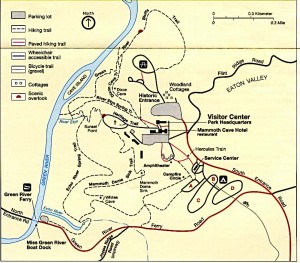
A Review of Off-Track Planet Magazine
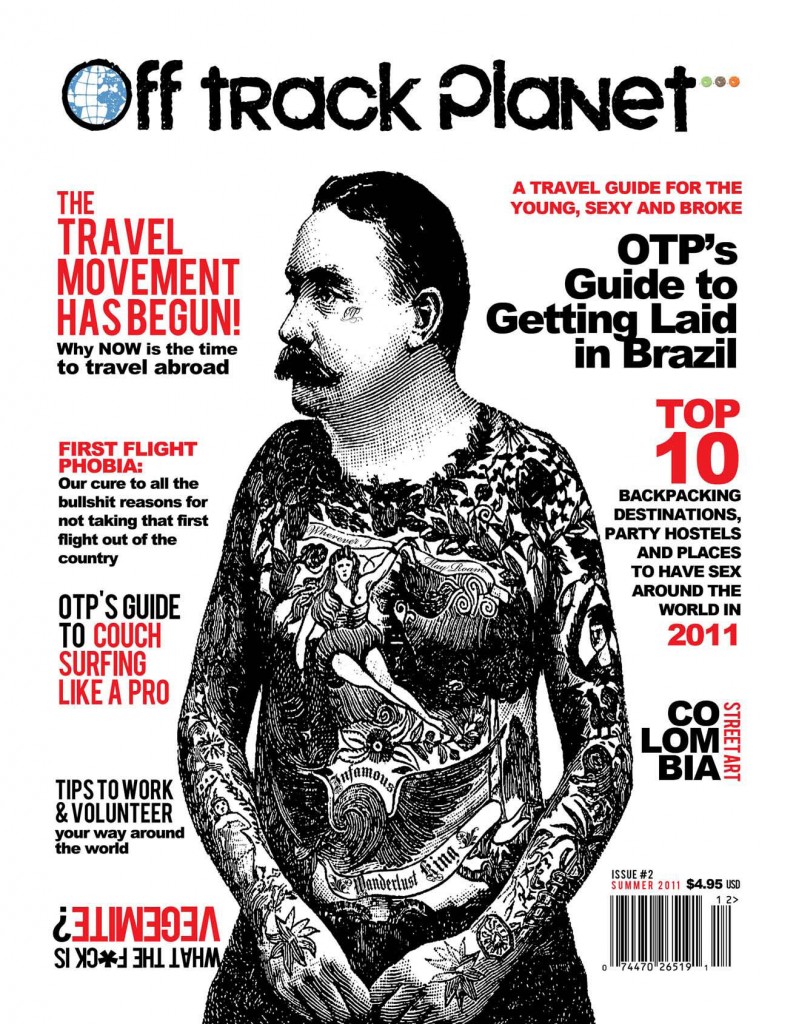 If you’re browsing a newsstand, you will quickly realize that there aren’t many options when it comes to backpacking magazines. You’ll find your classic travel magazines but none that really offers you the realities or the rawness of backpacking. This is where I introduce Off-Track Planet’s new magazine.
If you’re browsing a newsstand, you will quickly realize that there aren’t many options when it comes to backpacking magazines. You’ll find your classic travel magazines but none that really offers you the realities or the rawness of backpacking. This is where I introduce Off-Track Planet’s new magazine.
Off-Track Planet started off as any other travel blog. The only difference is that they now offer readers interesting backpacking content in the form of a magazine. One main feature that stands out of their magazine is the design. I am truly impressed by the artwork in the entire issue I read. It offers great pictures and artwork to its readers. It would be difficult for a reader not to take a peek at the magazine if it’s in front of them.
I would say that its content is geared towards a younger demographic, with or without backpacking experience. It’s an introductory to backpacking type of magazine where you can find fun and short articles related to cities, activities, personal stories, etc. It’s not the type of magazine you would buy to plan a trip because the articles are about one page long on average and offers very general information. It’s definitely a good read if you need a break from life and want to relax while thinking about traveling!
The price of an issue is $4.95 which is definitely affordable for a fun read. If you’re interested in finding out more, you can visit the Off-Track Planet blog.
Camping at Bon Echo Provincial Park
The best part of September is spending your evening around the fire with a hoodie. It’s the perfect time of the year to go camping and that’s exactly what I did with friends. Nara and I finally had the opportunity to hang out, after 6 months! Who says camping can’t be fun?!
Bon Echo is a provincial park located by highway 41. We reserved two lots at the Sawmil campsite, to the left of the park entrance. We were a 5-10mins walk to the closest beach (North Beach) and a 15mins walk to the main beach. The main beach is stretched lengthwise, with just enough sand for people to lay down and play beach volleyball.
When camping or visiting Bon Echo, one will quickly realize how “the rock” will gain a lot of importance. So on the cloudy day, our group decided to take a ferry (~$3,00) across to the rock and embark on a 1 km hike. You can choose to canoe over to the rock or take the ferry. The hike up is relatively easy and accessible for both adults and kids. It provides hikers with a nice view of the lake. Definitely worth it if it’s a cloudy day.
Camping Fire 101
- To start a fire, you need kindle wood and regular wood. The best way is to create a tippie with your wood, where the kindle wood is in the inside and the bigger pieces of wood on the outside. The trick is to light the kindle wood first (using a small piece of wood or paper) so that it then lights up the bigger pieces.
- Kindle wood in simply smaller pieces of the bigger logs. The goal of adding the kindle wood is so that it picks up the fire quicker and then transfer the fire over to the bigger logs.
- When fire is decreasing or not burning properly, take a plate and air it. The oxygen will boost the fire.
Roasting Marshmallows
Going camping without marshmallow is a no-no! I’m personally not a fan of smores but I found my own coup de Coeur this weekend!
- Find a stick in the woods and clean the tip of it using a knife. Then put your stick close to the coals in the fire to disinfect your stick.
- Place a marshmallow at the tip of your stick and put it in the fire. The trick is not to place your marshmallow directly on the fire but at the bottom of the coals. Make sure not to place it too close because it will start to burn after a few seconds.
- Once your marshmallow is ready, place a macaroon (coconut chocolate) inside your melting marshmallow and enjoy!!!!
Canada’s Apple History

photo credit: ontarioplaques.com
Only a few more days to gear up for one of Canada’s most historic festivals. The apple festival. A community in northern Ontario called Iroquois is celebrating a piece of history that very few Canadians know about. It will be held on September 17th.
It’s a festival about celebrating a farmer who found the McIntosh Apple over 200 years ago. His name was John McIntosh, hence the apple name. He found an apple tree on his property near the St.Lawrence River. Later this apple became known as the McIntosh apple, since years later John established a business selling apples.
Now as for today the family in the fourth generation still celebrates this family and Canadian history. The actual festival will be held on his late property where the oldest known McIntosh apple tree once stood. It wasn’t until earlier this year when the tree died.
The festival will not only hold many historic items, but will also include many contests, a BBQ, music, apple cider and of course lots of apples . It is a well planned celebration, where many Canadians should experience, since it is apart of our history.
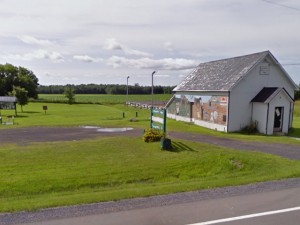
I used to travel solo to places around the world on a budget. I would spend days planning the nuances of a trip; the costs, hotels, transportation, tours, etc. I loved it and still do but there is another way to experience the world and save money: travel clubs.
Travel clubs can offer the best of both worlds when it comes to traveling. They combine the best parts of traveling solo and planning your own trip with the benefits of group travel. Now I know what you’re thinking: “group travel is an overpriced tour on a bus with 50 other vacationers stuck in tourist trap after tourist trap”. That was what I thought before I started planning adventures for our travel clubs since most big tour operators put together cookie cutter itineraries that tend to suck away the culture, adventure, and reality of a destination. I knew there was a better way.
The answer was to create a community of like minded people that share a few common interests: Travel, Photography, Adventure, & Culture. What I do is plan trips like I would if I was traveling solo but for our clubs. I keep them small (10-15 people max), affordable, and unique. The keys to a great adventure are simple: you want to maximize your time doing the best things possible and spend the least amount of money doing it. The beauty of traveling with a group is you actually get to do this and save even more money than if you planned a trip on your own or went with a big tour.
How is this possible? By exploring with a group or travel club you are able to avoid costly fees that come with doing it on your own. All hotels and large tour operators charge what they call “single supplement fees”. These costs are often double what you have to pay when traveling with a companion. But if you travel with a club or group of like minded individuals you can share rooms and cut your expenses in half!
One of the best parts of planning your own trip and traveling alone is the ability to meet more people and really immerse yourself in a countries culture. A lot of large group tours strip this crucial part of the experience away. With a travel club that limits the group size and plans unique adventures you get to have both. For example, if you love photography and are exploring the pyramids with a small group of photographers the overall trip can be more enriching than going it alone! Or, if you are single and have no one to go on an adventure with you could take a trip to the Big Island of Hawaii with other single travelers and make new friends at the same time. This way you not only get to immerse yourself in a countries culture and meet the locals, but meet people you would actually like to travel with again and again.
Last but not least is time. It can take a lot of time and energy to plan your own trip abroad. Traveling with a small group where the leader does all the heavy lifting & planning saves tons of time and energy. Not having to worry about where to go and what to do next can make the overall experience more exciting. You get to focus only on the good stuff: the adventure itself!
There are tons of these niche clubs and groups out there. You just gotta look for them. Skiing clubs, hiking clubs, foodie travel clubs, adventure groups, singles travel clubs, and so many more.
For travel lovers who like adventure and photography trips check out PhotoFly Travel Club. If you’re single and want to meet people while on an adventure (the best way really!) check out Singles by the Bay Travel Club for singles travel.
After all this planning and booking for Peru, I realized I have to get back into the swing of my backpacking ways. It’s been actually a long time since I have just “wing it”. It’s crazy how time passes so quickly. My last backpacking adventure was Argentina and Chile. Scary thought, knowing that was over 2 years ago! Back in the day I always kept up with the one BIG backpacking trip per year. But with life getting so busy, it’s so easy to ask where the time went. At least the small trips are always there, with 3 under my belt this year; Las Vegas, New Orleans, and Chicago. I shouldn’t really complain but ekkk….. two years of not wandering around a country is a LONG time for me! 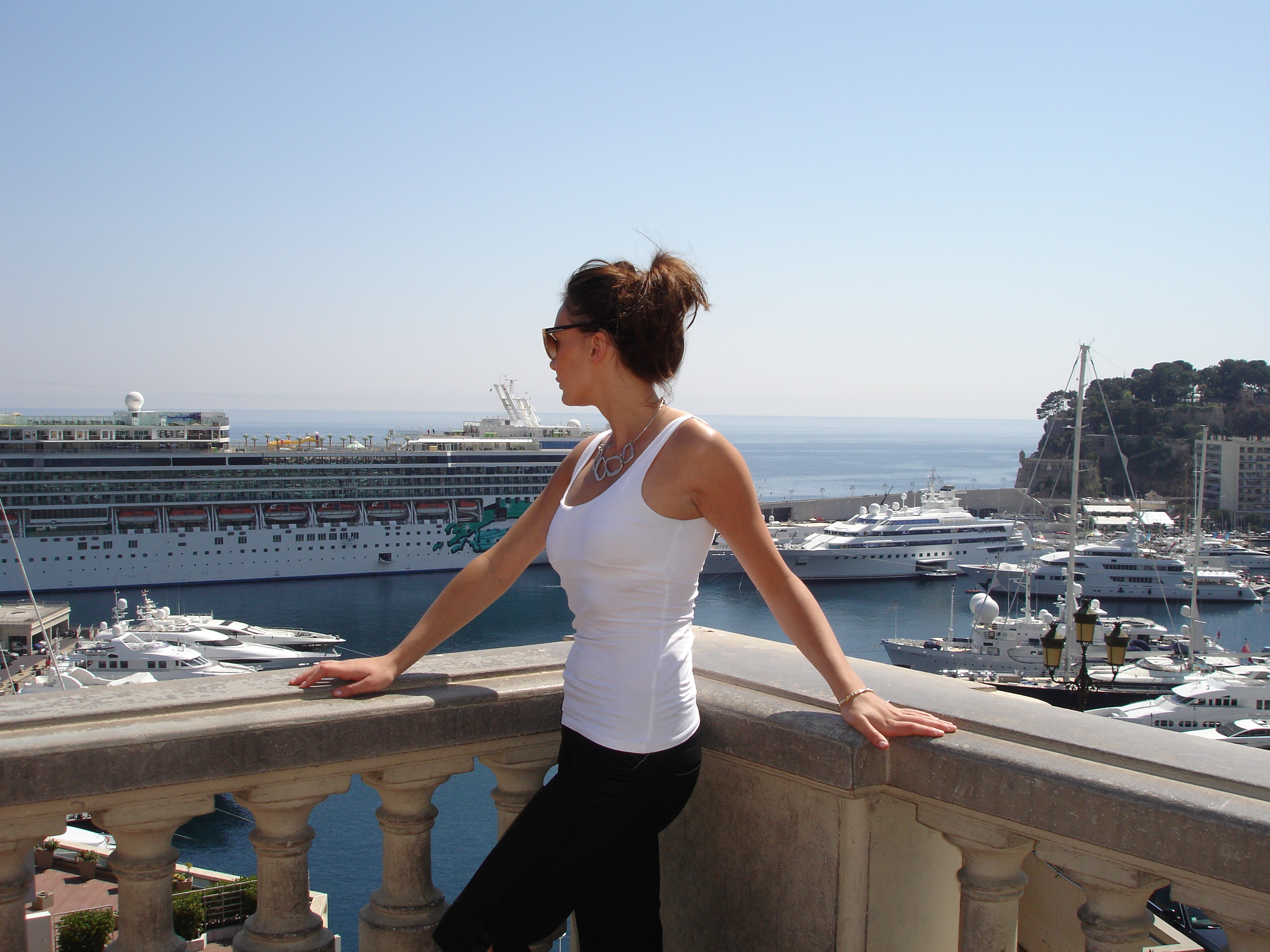
Since it has been so long since backpacking for me, I decided to book most of the hostels, trains, and tours ahead of time. Just to feel that extra safety net, but at the same time I hope planning so far in advance won’t hinder any random fun activities. A few things I had to book in advance, such as the train to Machu Picchu and the entrance fee. I was so excited yesterday because I got one of the last booking spots to experience the sunrise on Huayba – Machu Picchu. Limited amounts of people are allowed to climb up to Huayba to see the sunrise at 7:30am. And I got one of the spots! WHOOOOO. With that being said, I also booked a tour in the Amazon for two nights. It’s a kayaking tour, which will be interesting considering I rarely kayak. So with a few booked activities underway the next step is figuring out what to bring. The weather is suppose to mildly warm in most areas of Peru, but I was told that Puno can reach negative five during the evenings. That won’t be so enjoyable since I haven’t been in cold weather for the past four months. My backpack will have to be neatly organized with lots of cool wear, hiking gear, and a few jackets for those cool nights. I must keep in mind that for most of this trip I will be in the outback and enjoying the nature things. It’s not one of my typical adventures, where many cities are apart of the journey.
If anyone knows, what the ideal backpacking gear would be to bring for my trip to Peru in October, write me a quick email. I would love to hear your ideas and advice.
Planning a Camping Trip
With the long week-end approaching, Nara and I are particularly excited because it means we’ll be seeing each other! With her living in Toronto and I in Montreal, we normally make it a point to see each other every few months. But unfortunately, the last time we saw each other was February so we are long overdue to spend some time together and with friends. For the both of us, long week-end normally translates in road-trip, and so, we are planning for a camping trip at Bon Echo Provincial park in Ontario. Although it’s a few hours away from both of our cities, it’s renowned to be a good provincial park and we’re looking forward to it.
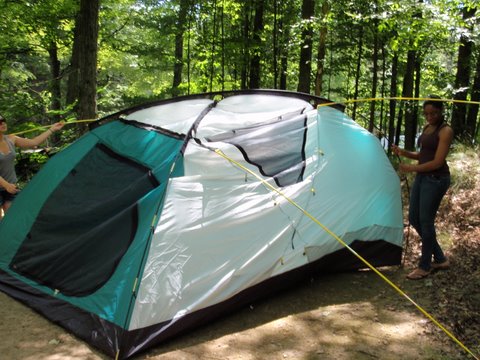
When most people hear the word “camping”, they think about mosquitoes, lack of bathrooms, dirt, etc. That would probably be a good description for rustic camping but provincial parks in Canada are well equipped. So the camping we’re referring to is with nearby bathroom facilities, electricity and water. I’ll save the rustic camping occasions when I’m backpacking somewhere exotic. With only a few days away from leaving on a camping trip, I need to think of items to pack.
- Tent, sleeping bags, mattresses and tarp: These are pretty much the basic necessities for camping. Putting up the tent will be an interesting task of its own but we should be able to put it up without too much difficulty. Tarp is always useful when it rains. I normally put one over the tent and keep an extra one in the car to put over the table if it rains.
- Hammer, machete knife, flashlight and lantern: These items will also come in very useful. We’ll need a hammer to put up the tent. The knife is always useful, either to cut food or difficult items to cut with a regular knife. The flashlight and lanterns will be handy once it’s dark.
- Camping/portable stove and grill for campfire: The portable stove is not a necessary item because you can easily cook using the fire and a grill. But, since I mentioned that I’m going on a slightly more luxurious camping trip, the portable stove is coming with up. I plan to make the eggs or boil water or tea or even make some coffee.
- Plastic plates, garbage bags, cloths, dish soap and pan: While trying to use plastic plates and utensils to eat, we’ll still need to bring a pan for whatever we need to cook on the stove. It’s always to have a back-up plan. For example, I normally cook eggs in the pan but if it’s windy one night and we’re having trouble keeping the fire going, at least I can cook the food in a pan. Which then needs to be washed in dried so we need to make sure to bring cloths and dish soap. Garbage bags always come in handy for your garbage, of course.
- Food and cooler: The best part of it all is the food of course! To keep things simple, I normally bring burgers, brochettes, corn on the cob and vegetables. They are simple to cook and so tasty when cooked on a fire. I can’t forget to bring other necessities such as spices and oils to marinate the food. The cooler should be filled with ice to keep meats and dairy products cold at all time.
- Personal items: This is where you personal items comes in such as clothes, bathing suit, mosquito repellant, sun screen, soap, shampoo, towels. Most camping grounds do have showers that you can enjoy. If not, you can always stay stinky for a few days. Do avoid bringing perfume based products because it will attract the mosquitoes!
All in all, camping is fun and relaxing! To ensure a good trip, do be sure to leave your food in the car at night and tie your garbage back high up to avoid unexpected surprises at night. Enjoy!
The ultimate deep-fried experience
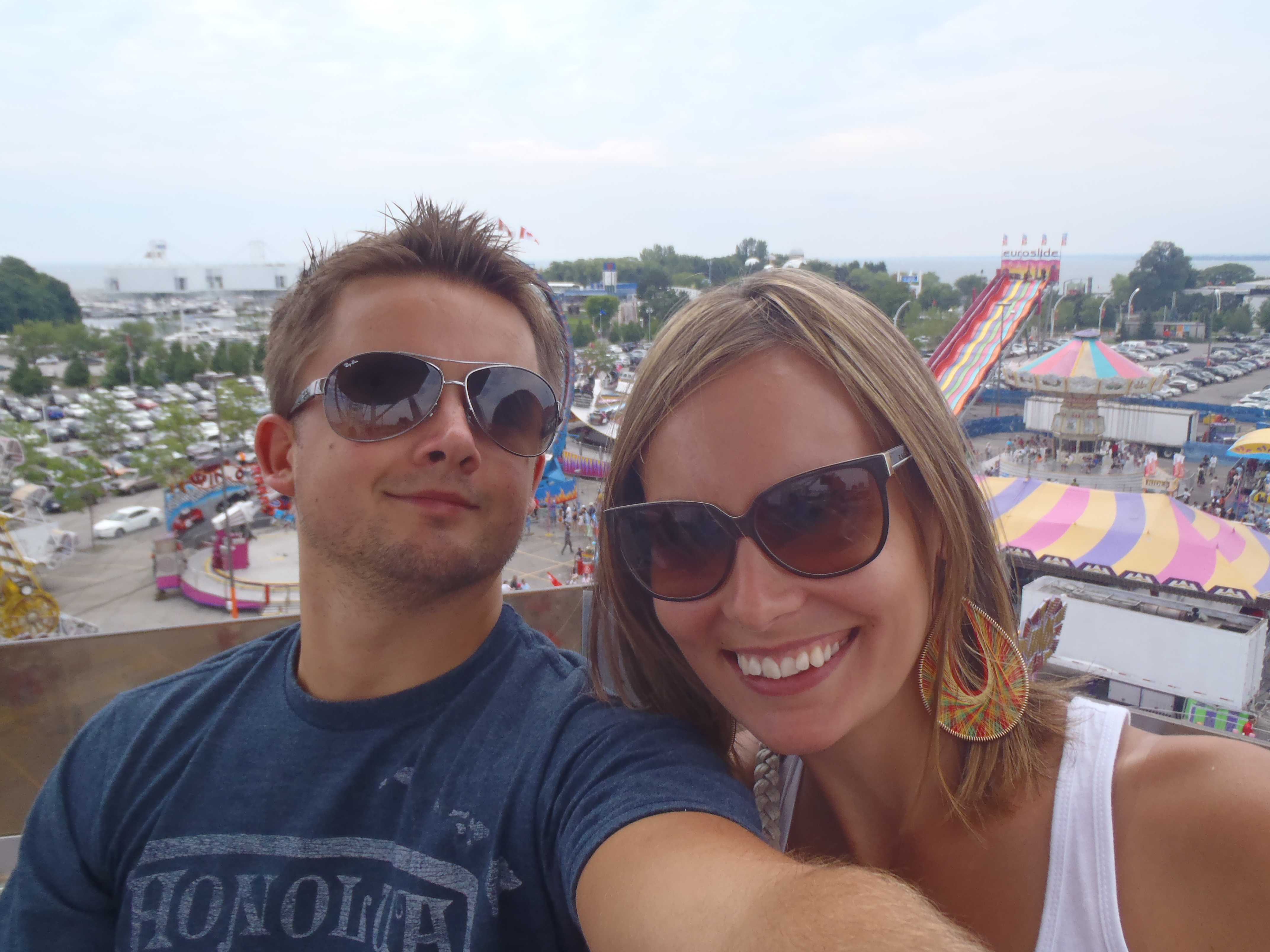 It wasn’t until yesterday, where I decided to experience Canada’s largest annual community event, the CNE (Canadian National Exhibition). Before even entering the fair, my first thoughts were fried food. I always thought that the CNE was just about trying the up-most craziest fried food there is to experience. Yes, it’s mostly true, but there is also much more than just experiencing the variety of commercial products. It was about enjoying the entertainment and events that the fair offered too.
It wasn’t until yesterday, where I decided to experience Canada’s largest annual community event, the CNE (Canadian National Exhibition). Before even entering the fair, my first thoughts were fried food. I always thought that the CNE was just about trying the up-most craziest fried food there is to experience. Yes, it’s mostly true, but there is also much more than just experiencing the variety of commercial products. It was about enjoying the entertainment and events that the fair offered too.
The CNE offers shows such as the strong man show, the human cannonball, the flow-rider, and the skating/acrobatic show. The skating/acrobatic show was what impressed me. I had no idea that the CNE offered such good quality shows. They even had the Canadian Olympian Joannie Rochette join the skating show.
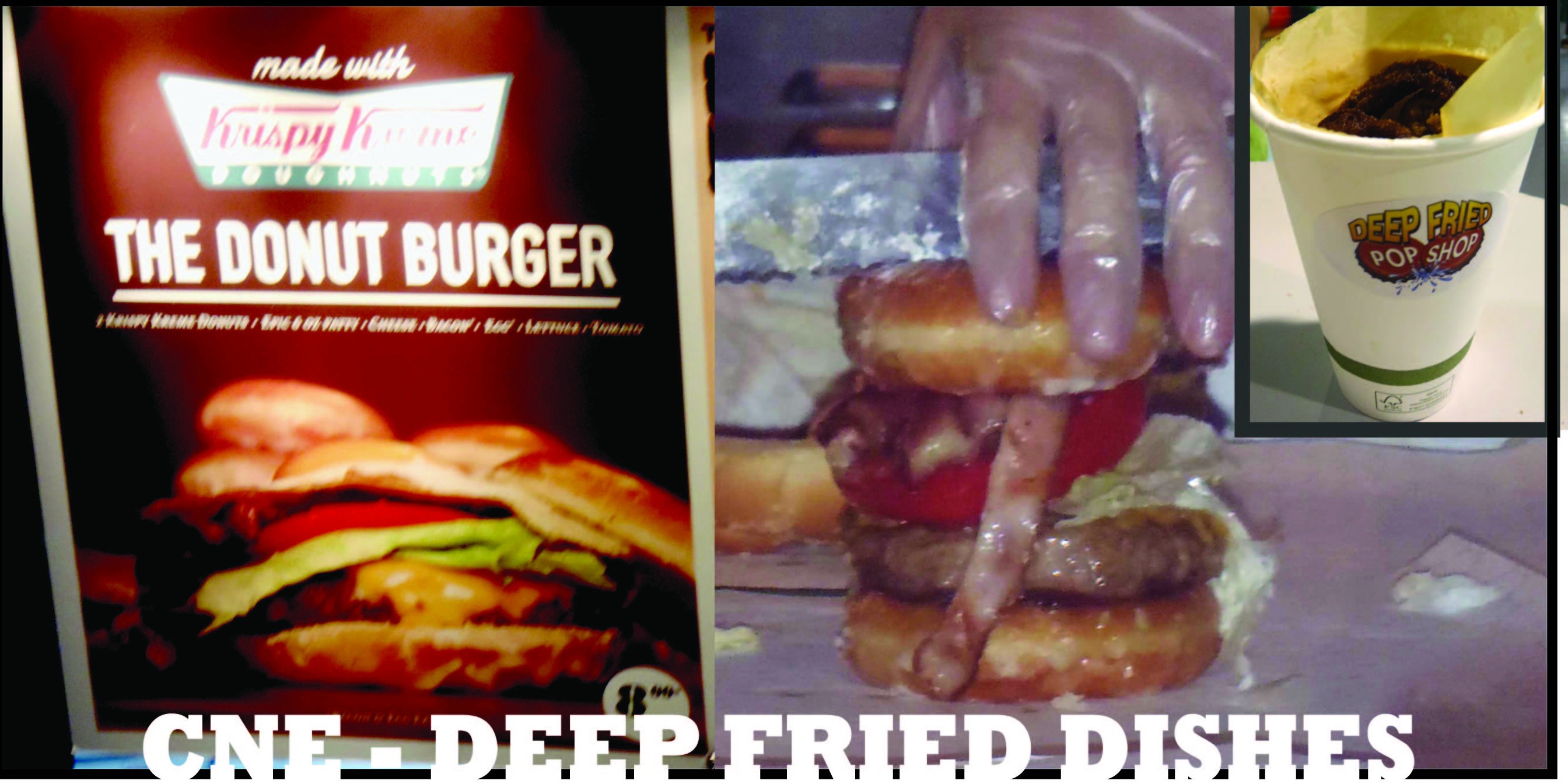
Every year, the CNE offers some sort of a new fried food. This year the two main deep fried dishes were deep-fried Cola and the Crispy crème doughnut burger. Of course every person who walks through the gates of the CNE wants to experience these insane deep-fried dishes. And of course I was one of them. Well, I could only go as far as trying the deep-fried Cola, the doughnut burger looked a little nasty to me. I couldn’t bring myself to try a 2000 calories meal. I think my body would go into shock after eating a hefty type of meal like that.
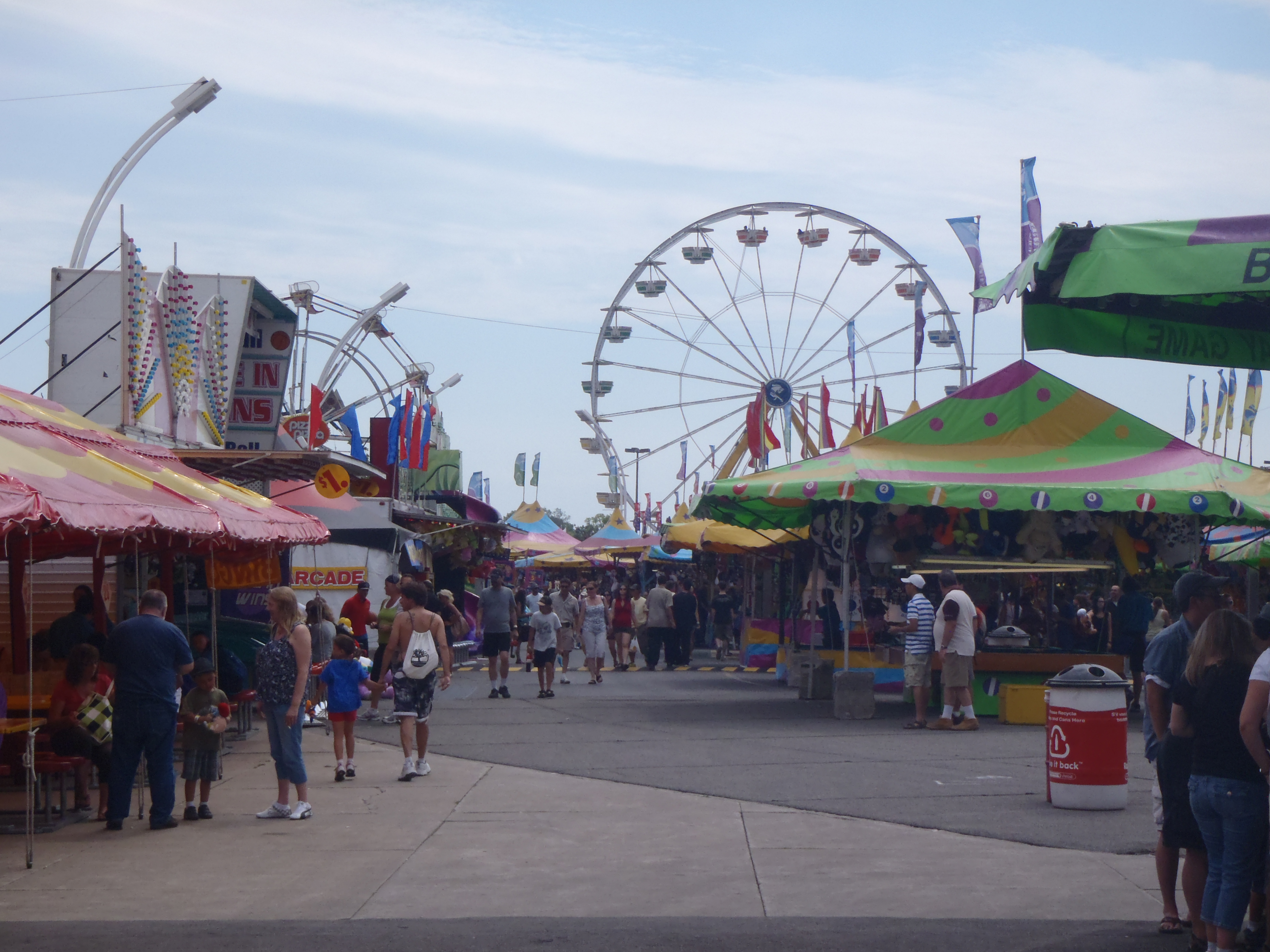
My first impression of the deep-fried Cola was what is “THAT”. It looked like long strips of very burnt bacon, but tasting like burnt cookies. Overall it wasn’t like any Cola I have experienced before. As for the doughnut burger, well at first I thought who in the world would eat something so crazy. Funny thing is, the line up was huge! Most of the people in the line up were men, but still. A burger that contains, cheese, egg, bacon, onion, lettuce, and on top of that two Crispy crème doughnuts sounds like heart-attack waiting to happen. But who knows, maybe this burger is yummy.☺
After capturing the scenes of people eating, I decided to go on a ride, the Ferris wheel. I am not a big fan for rides at the CNE, but I do love the Ferries Wheel. I feel like the kid inside me comes out. Love it. As the day slowly came to an end, I think my first visit to the CNE was an entertaining one.

